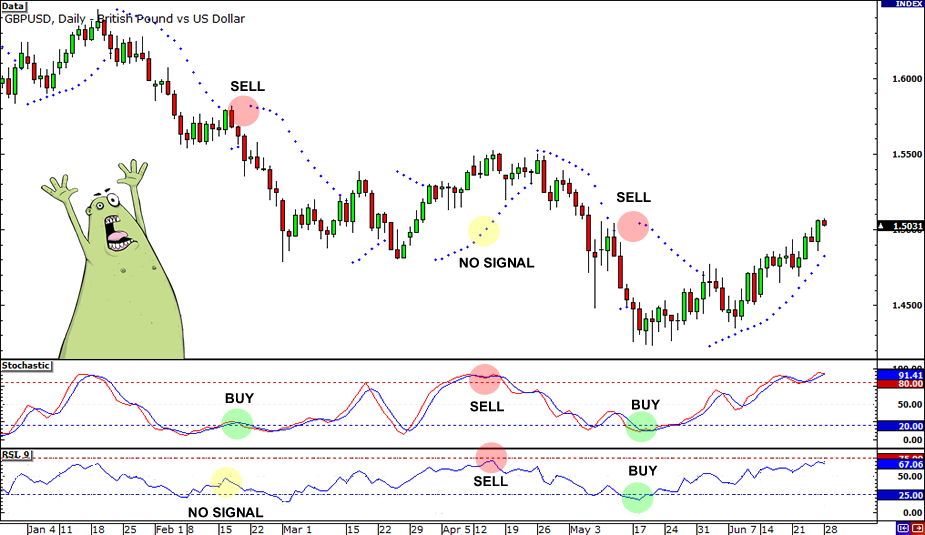
Decentralized financial market is becoming more attractive for the newcomers and is gaining popularity with every day. And for those, who have learned how to work out on their trading strategy, custom technical indicators will be a great help to execute automated operations.
The biggest advantage of using tailor made indicators, is that trades are placed only upon particular criterias are met. No surprise this is appealing, as you can turn exact entry/exit and funds’ management rules turning it into an automated execution without emotional involvement. But before diving into that, let us see pros and cons of using customized trading indicators, and whether it is something you would like to apply into practice.
Trading Indicators Overview
Trading technical indicator is basically an applied formula to the price data predicting future price, or simply generating the common direction of the price by analyzing the patterns. It gives a distinguished perspective of the market activity which may be not so rich and full by a simple manual price charts monitoring. Gathered price data comprises combinations of open/high/low or close positions over a certain period of time. Keep in mind that not any fundamental business is analyzed thoroughly, like its earnings, profit margins or revenue. Indicators are extensively designed for processing short-term price movements, so they are not of a big use for a long-term investments, but still they could contribute by identifying good entry/exit points for long-term trends.
A lot of modern trading platforms allow users to program and implant own custom indicators that interprets desired concepts for the computer. At the same time, there is a vast variety of those technical indicators designed to activate particular calculations and display respective results. Despite the fact that there are so many ready-to-go available indicators, numerous amount of traders desire to develop their own ones – in order to determine some unique conditions in the market or carry out specific actions. No wonder, as these custom indicators serve as very efficient assistance carrying out three most important aspects for trading: alert, confirm and predict. Read the paragraph below to find out main trading indicators and its functions.
Types of custom indicators
As it was stated earlier, indicator acts on behalf of the alert studying price actions more closely. This helps you to confirm the results of other technical analysis tools. You can also use customized indicators to predict the future direction of prices. There are three main indicator categories:
- Leading Indicators: developed to be guide in price movements. Mostly represent a sort of a price momentum over a certain timeframe indicated in the signal’s features. This type of indicators is commonly used in trending markets – identifying oversold conditions for buying opportunities or overbought situations for selling ones.
- Lagging Indicators: they follow the price action and are mostly efficient when a strong trend is developed. The biggest benefit is that, when you catch a move, you stay there, though they are not so effective in FX markets as they can lead to many false signals.
- Oscillator Indicators: they usually fluctuate above or below the centerline or between indicated levels, as its value changes over some time. There are many varieties of oscillators, but in general centered oscillators are best for analyzing the direction of the price momentum, while banded oscillators are best suited for identifying overbought or oversold levels.
Conclusion
Whilst with a broaden perspective over the market come higher returns, remember that risk is greater as well. Indicators have to be well adapted not to cause false signals or be late to make a move. Ideally, we would like custom indicators be fully sensitive to price movements, give early signals and perform as productive analysis as possible. But one usually happens at the cost of another, so it is advisable to make a profound research before starting to customize own technical indicators into your trading strategy.





![Binance Review: How the Crypto Exchange Works [2024]](https://www.feedroll.com/wp-content/uploads/2024/03/binance-trading-100x100.png)



